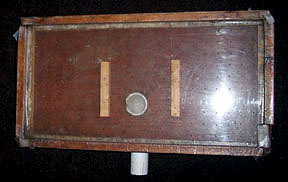Vacuum seeders can speed the seed sowing process and save tedious work. We really like this seeder for crops like kale, cabbage, broccoli, and basil–species with small round seeds that are hard to handle. It does not work for crops like lettuce, but we have used it with onions. Our home-made version has a wood bottom made of 12- by 22-inch plywood with a piece of 1 1/2-inch PVC attached to it (see photo).
The top is constructed from a piece of Plexiglas (1/4-inch thickness) with holes (see photo). Position of the holes was established by marking them on the Plexiglas with a pen through a plug tray. The holes can either be drilled with a very small drill bit or punched with a heated nail.
The Plexiglas is fastened to the bottom board with two pieces of wood, like a picture frame, with one above and one below. We made the fra me just fit over the edges of the plug tray. There is a small hole in one end for dumping excess seed back into a pan.
me just fit over the edges of the plug tray. There is a small hole in one end for dumping excess seed back into a pan.
We connect the seeder to a shop-vac for use. We sprinkle seed on the Plexiglas surface of the seeder, turn on the vacuum, shake the excess seed off, the seeds drop one per cell.




